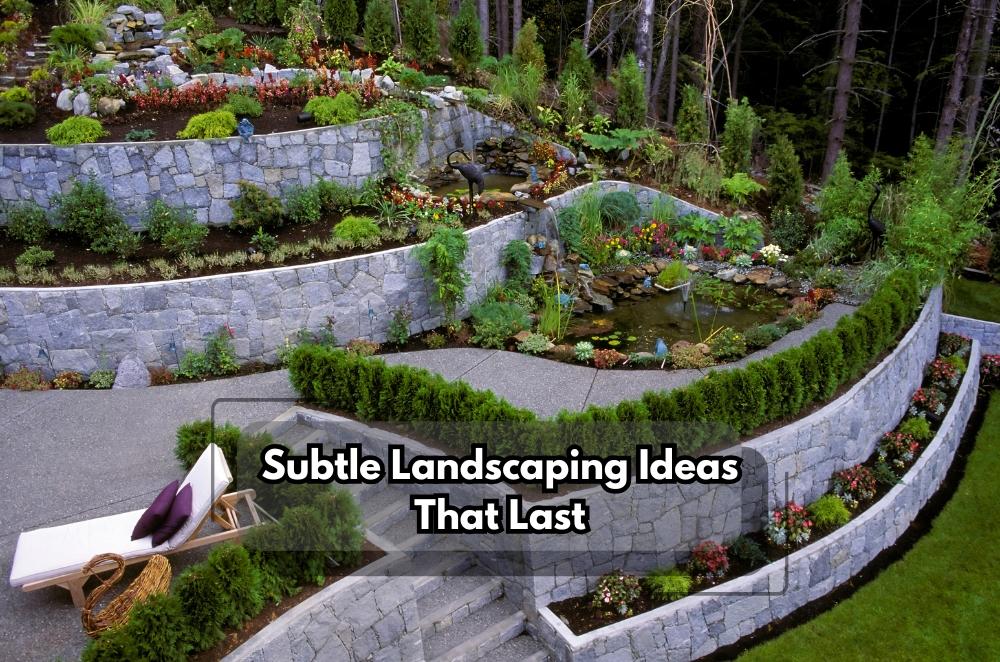Subtle Landscaping Ideas That Last

Backyards carry the stories of our homes. They host birthdays, lazy Sundays, and the odd muddy cricket match. But they don’t lift themselves into shape; design, soil prep, and seasonal care all matter. When budgets are tight, DIY is tempting. Still, one choice tends to pay for itself: Hire professional landscapers for residential projects. With a trained eye on drainage, plant selection, and site access, the results look better and last longer. We’ve watched lawns bounce back after smart aeration, paths sit level because the base was done right, and cramped courtyards turn welcoming with a few structural tweaks. That’s not extravagance. It’s a sensible, durable upgrade to everyday living.
What turns a yard into a landscape?
A yard becomes a landscape when design, structure, and maintenance work together. It’s planned, layered, and suited to the site.
Start with the bones—levels, edges, access. Good drainage protects plants and paving, while sound soil sets the table for everything else. Then add structure: paths that guide the eye, beds that frame living areas, and plant layers that grow into themselves rather than overrun the place. Finally, lock in maintenance that fits local seasons—mulch before heat, prune after bloom, and tune irrigation for water restrictions. The sequence matters because each step reduces rework later and keeps the space feeling intentional rather than patched together.
• Bed lines that echo architecture
• Plants matched to sun, wind, and soil
• Scaled paths for wheelbarrows and prams
• Mulch depth set for local summers
For planning and scope control, we prefer a lean brief and a precise specification that aligns with the site's local landscaping plan and specifications.
How do we balance the landscaping budget and impact?
Spend on foundations; save on fuss—Prioritise drainage, soil, and irrigation before the pretty bits.
High-value fixes come first: correct falls, amend soil with compost, and edge beds to keep lines crisp. Choose plants that earn their keep—texture, shade, habitat—without constant attention. Break the project into stages to suit cash flow: lay conduits for future lighting, set concrete pads now for a later shed, and run sleeves beneath paths so you’re not cutting pavers down the track—small moves; big payoffs. Avoid shiny impulse buys that don’t solve an on-ground problem. A tidy, staged plan keeps momentum and prevents half-finished corners from dragging the whole yard down.
• Prioritise drainage before planting
• Choose hardy natives over divas
• Edge once; weed far less
• Pre-wire for later features
What’s the takeaway for residential landscaping?
Do the unglamorous work first. Then add character with restraint so the space stays tidy and usable.
Think sequence: brief, design, groundworks, then planting and finishes. Keep maintenance front and centre, and the yard will handle summer scorchers and winter squalls. Deep mulch, permeable paving, and zoned irrigation build resilience without daily fuss. We’re also big on planting in layers: canopy, mid-storey, groundcover—so the garden looks “finished” sooner and suppresses weeds naturally. A couple of well-placed features (a bench under shade, a narrow water rill for sound) can lift mood without inflating upkeep.
Most importantly, establish a simple care routine you can actually stick to: monthly edge touch-ups, seasonal mulch top-ups, and quick irrigation checks after heatwaves. It pays off year-round why garden care matters.







